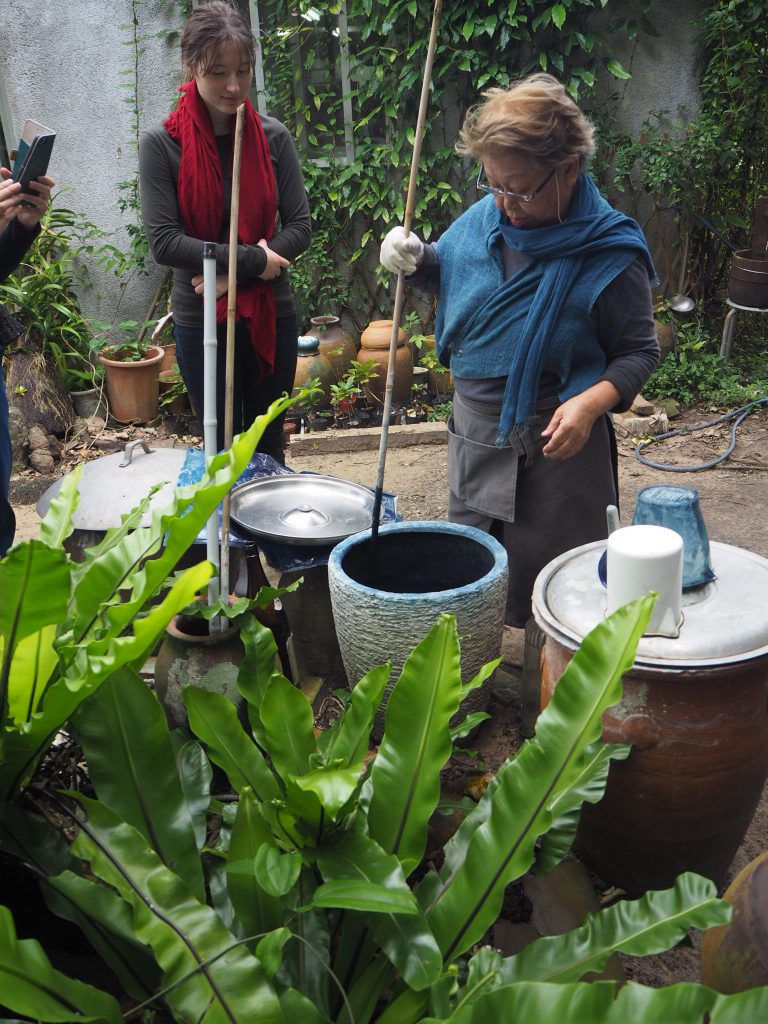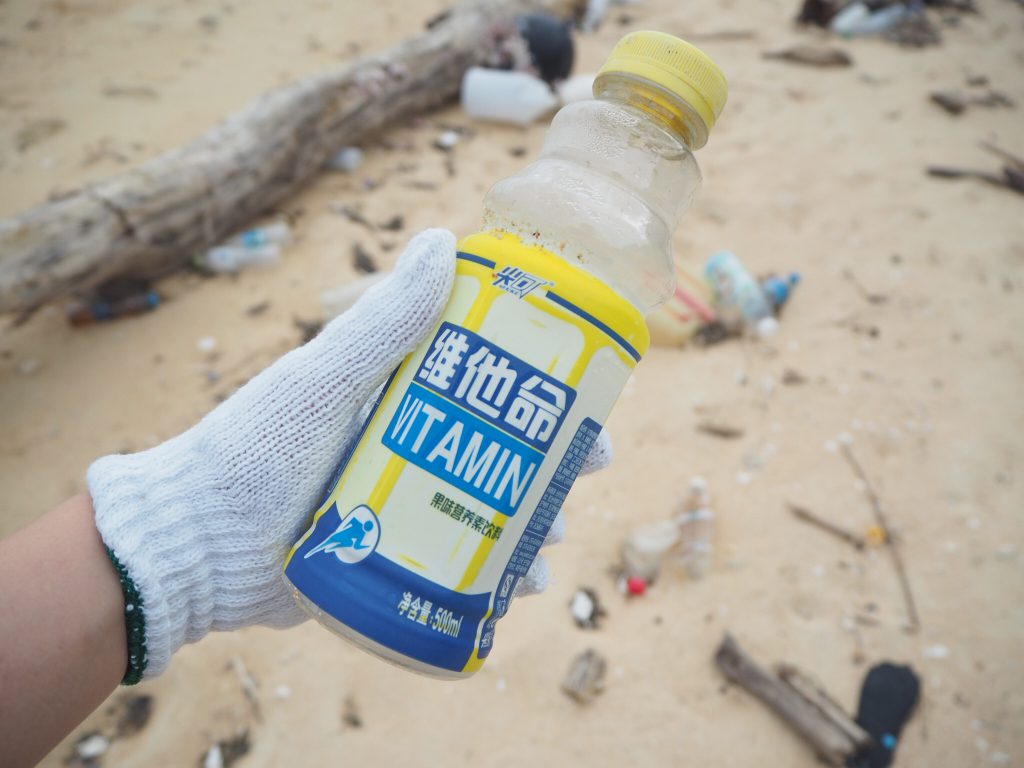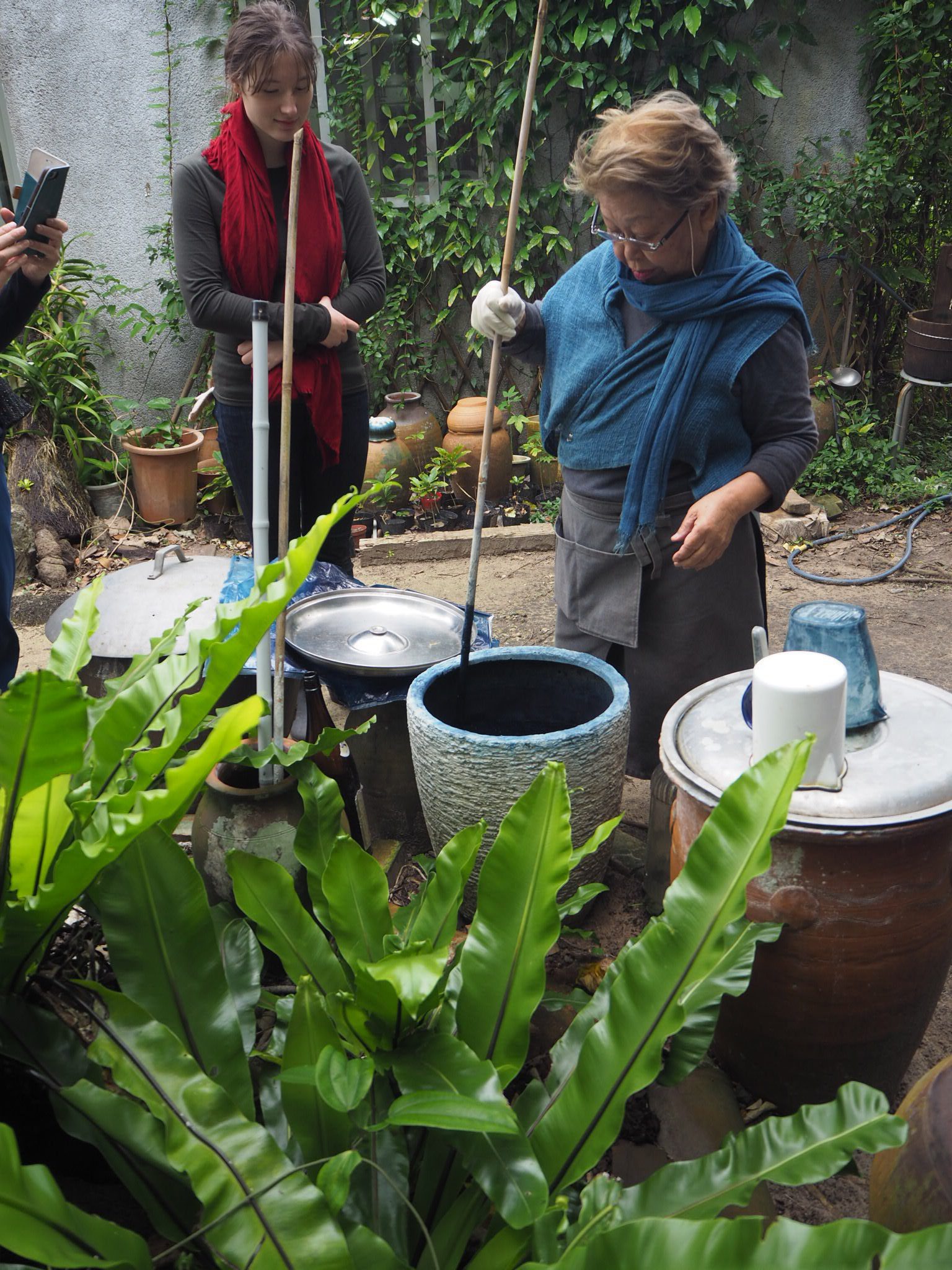Melting into the Environment
Melting into the Environment
Ayako Fukuda
During the course of this class, we were able to obtain fieldwork opportunities in Kamakura, Kanagawa, as well as Iriomote Island, Okinawa. During these fieldwork opportunities, we examined the effect of human lifestyles on the environment, as well as the effect of the environment on human lifestyles. Especially on Iriomote Island, we were able to examine the healthy interaction between humans and the environment in which sustains a healthy ecosystem. Through this, we learned the importance of a sustained environment (or permaculture) to support lifestyle cultures.
During our fieldwork on Iriomote Island, we had the opportunity to interview Akiko Ishigaki, a textile maker who has had some of her work shown in famous museums such as MoMA in New York City. She weaves all-natural cloth using traditional methods using fibers harvested from the Basho (banana) plant, and uses natural dyes from the roots of mangrove trees and indigo. It was when she left Okinawa to study textiles in Tokyo when she discovered her life work. “In museums, I saw textiles similar to what my grandmother had in her own closet,” she said. “That’s when I knew that the textile tradition in Okinawa was worth preserving.” After this realization, she flew back to Okinawa, studied the traditional way of harvesting, weaving, and dyeing and made the weaving tradition her own.

Just like the indigenous people of Iriomote island, Akiko Ishigaki utilizes yet sustains the resources in the ecosystem around her. When she and her husband harvest materials, they do not take more than they need. As in the Yaeyama tradition, Akiko’s husband Kinsei prays to the god of the mountain before harvesting any materials. In the Iriomote tradition, the endangered Iriomote Cat, as well as wild boars are also considered gods. Akiko also mentioned that large pharmaceutical companies once wanted to commercialize Akiko’s dyeing methods, however, because large amounts of resources such as indigo would be taken away from the island, Akiko refused in order to protect the ecosystem around her, therefore protecting the island way of life.
People on the island of Iriomote cannot rely on imported resources or materials. It is too expensive to do so. The people on Iriomote are and have had to be self-sustaining. Crops such as rice, papaya, and sugarcane are grown on the island. The people also pick their own seaweed from the ocean. As seen in the picture below, the chef at the hotel explained to us that young papayas are used as a vegetable like daikon radishes on Iriomote. When papayas ripen, insects and birds eat the fruit, therefore it is easier to harvest while it is still not sweet. We also noticed livestock such as chicken to be common around the island. By using local ingredients and what is available, Akiko stated that food tradition in Iriomote is very important. By preserving the natural flavors of the ingredients of food, people of the island are able to taste the freshness and be thankful for every meal.

This inspiring way of life that is so different from our lives in Tokyo lead us to ask questions about passing down this traditional lifestyle information to the younger generation. She thought for a second and responded “Passing down skills is not as important as the core idea of our tradition. We don’t go out of our way to live this way. We just melt into the environment.” For Akiko, the environment creates her lifestyle culture. Therefore, it is so important to preserve it.
Preserving the environment is important because disturbances in ecosystems caused by humans can cause unbalanced ecosystems, which can eventually lead to food shortages and restrained access to resources. We must keep a mindset that our lifestyles ultimately affect the environment. For example, during our fieldwork on Nakano Beach in Iriomote, we took a sample of plastic bottles found on shore. By analyzing the barcodes on bottles, we were able to identify where the bottles from. Out of the 71 bottles with labels that we found, 55 bottles were from China, 6 from Korea, 5 from Japan, 2 from Vietnam, and one each from Taiwan, Malaysia and Thailand. On Iriomote, ocean debris can cause harm to animals such as sea turtles because garbage on shore prevents sea turtles from laying eggs. Other ocean animals can also become ill from consuming ocean debris. Other pollution such as petroleum can cause direct harm to ocean animals as well.
After this fieldwork, I noticed that there was something black on my shoe, so at the community center near Nakano beach, I tried to wash it off with a hose. However, no matter what I tried, it would not come off. After consulting the representative from the environmental conservation group, we realized that I had stepped on a “tarball” in which is a clump of petroleum that is the result of oil spills or leaks in oil rigs. Tarballs not only can cause ocean animals to not be able to move, but they also contain toxins that can directly affect an animal’s health. I realized that renewable energy sources are important in this respect because even small amounts of waste from non-renewable resources such as petroleum can cause so much harm to the environment.
The people of Iriomote are stuck with a particularly difficult situation because there is no way of disposing the trash directly on the island. Because all trash picked up has to be sent to the neighboring island of Ishigaki to be disposed of, it costs a lot of money to dispose of ocean debris. Although the people of Ishigaki want to dispose of this trash, they are stuck in a situation in which they are unable to dispose of trash. The amounts of ocean debris found on Nakano beach made us realize that ocean pollution is not only a domestic problem, but is a problem that has to be combatted internationally. Although there weren’t that many bottles from Japan, other countries may find Japanese ocean debris on their shores. During our fieldwork studying ocean debris found on Yuigahama beach in Kamakura, we found ocean debris similar to that of Nakano beach. There was a lot of unrecyclable trash such as Styrofoam. On Yuigahama beach however, there was a lack in presence of bottles and cans, perhaps because they are easy to dispose of. Seeing the direct impact of our consumer choices on the beach made us realize the importance of eco-friendly packaging, as well as the enforcement of trash disposal laws in order to protect the environment.

In order to protect Iriomote’s rich environment, as well as the endangered Iriomote Cat, Iriomote Island is expected to become an UNESCO world heritage site within the next year. According to Kinsei Ishigaki, if Iriomote becomes a UNESCO World Heritage Site, then there will be certain protective laws created to protect the site from resorts and companies that may want to exploit the natural resources of Iriomote. Therefore, they would be able to reinforce “eco-tourism”, featuring highly educated tour guides in order to promote tourism in Iriomote while protecting the environment. There are arguments that because Iriomote would gain more popularity when it becomes a World Heritage Site, that it would in turn be bad for the ecosystem. Some argue that with increased tourists on the island, car accidents involving the Iriomote Cat- which is the main cause of death – would occur more frequently. Kinsei argues that he would like to combat this by making tourism more expensive, or limiting the amount of places for tourists to stay in order to protect the environment.
To to live an environmentally friendly and sustainable lifestyle, we do not need to live like Akiko and Kinsei Ishigaki; however, by taking small steps such as choosing environmentally friendly packaging, or becoming more educated about actions that can create a positive impact on the environment, we can sustain a healthy permaculture and live in harmony with nature. Akiko Ishigaki’s “melting into the environment” concept doesn’t have to just apply to Iriomote Island. It is a universal knowledge in which can be applied to anybody and anywhere. Before the spread of machinery and widespread use of non-renewable resources such as coal and petroleum, people had to be self-sustaining with natural resources in order to survive. Today, because non-renewable resources and technology make our everyday lives more convenient, most of this knowledge has been lost. Because people do not question where their food or belongings come from, the importance of preserving the environment has dulled. People are satisfied with their convenient lives, therefore, they do not stop and think about sustaining the environment because they are not directly integrating with it for survival. Manufacturing and trade companies serve as the middleman and integrate with resources instead of us. However, because these companies want to make profits, many do give regard to the environmental consequences of their actions. This creates a vicious cycle between the environment, companies and the consumer. We must integrate with the environment ourselves in order to understand its importance. We can all take small steps toward living an urban, yet sustainable lifestyle by being more educated about the products that we buy, supporting clean energy, and most of all, integrating with the environment to understand its importance.

